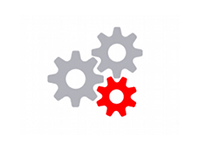

|
|
"Upon a labouring day without the sign of your profession? Speak, what trade art thou?"
"But wherefore art not in thy shop to-day? Why dost thou lead these men about the streets?"
- William Shakespeare (Flavius), "Julius Caesar"
|

|
Almost every industry presents its challenges and opportunities in the 'Adaptive' landscape.
They can arrive in the form of new research (internal or external), technology shifts, customer trends,
geopolitical or environmental concerns, service description or scope change, supply-chain continuity, and of course, economics.
Many of these challenges are unique to specific industries and may not be addressed by one-size-fits-all type of solutions.
Others, though, could be looked at in terms of boilerplate patterns, trends, technologies, solutions and even entire business functions.
These could be indicative of more pervasive landscape shifts, and can, hence, be shared and leveraged as COT-like pieces.
Some significant trends that are normally common across the board, throughout the industry landscape,
are employment of adaptive strategies, flexible enterprise architectures, streamlined processes,
and well-defined intellectual capital that is understood as well as malleable under change.
Adaptability for an industry is its constituent's ability to reach customers and collect their feedback,
to incrementally roll out 'minimal viable products' ahead of more complete solutions based on resulting feedback,
and to be lean and agile i.e. work with smaller investments in infrastructure compared to long worn out cycles
where results could be obsolete by the time they can be rolled out.
Another blend of challenges is presented as new research.
For example, whereas nanotechnology can bring a disruptive opportunity for an industry to produce lighter cars and structures,
it also has the potential of changing its IT landscape through a continuation of Moore's law
by leveraging carbon nano-structures in computing and communication platforms.
Our changing environment is yet another disruptor.
Examples include adoption of clean energy and fuel-efficient cars.
The full list include, the shifting computing technologies (e.g. cloud computing, SaaS and big data),
resurgence of expert systems fuelled by cheap computing power (e.g. computing developments that could transform
lawyers' and doctors' work by embedding them with the functions of healthcare and legal services expert systems),
evolving consumer trends (e.g. online and mobile customers, and social media), and more.
Among the many trends to watch include: software as a service, cloud computing, social media, 'e-bots'
- robotics and expert systems, e-learning, brain imaging - and hence better models for human-computer interaction
and intellectual capital, agile development, increased automation - software-heavy industrialization, big data,
personalized marketing, content distribution and intellectual property rights…
We have exposure to a number of these industries as well as to many of their common
business, departmental, project, information technology, and subject matter requirements.


© Copyright 2003-2018 Adaptive Enterprise Inc. - All Rights Reserved
|



